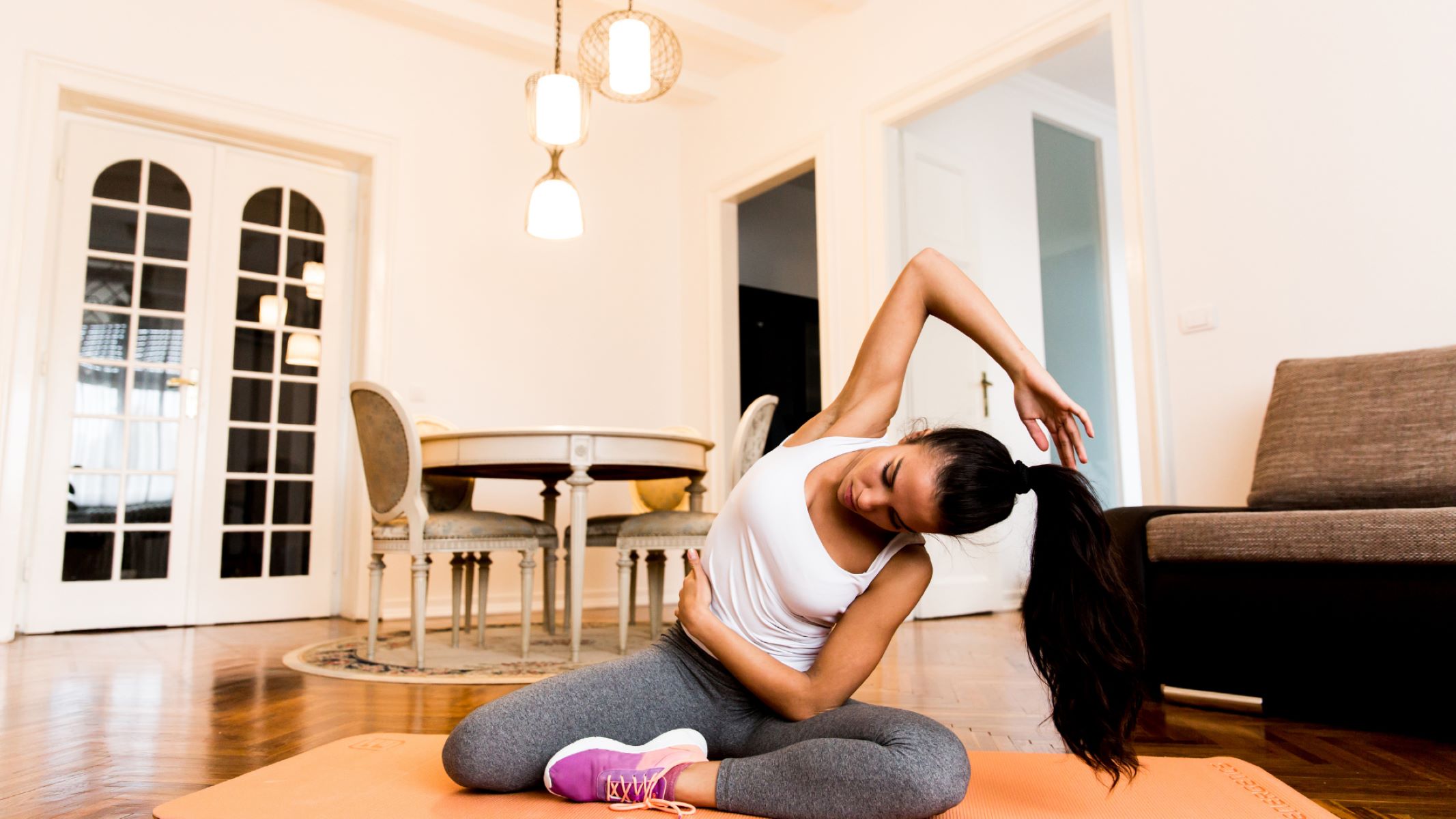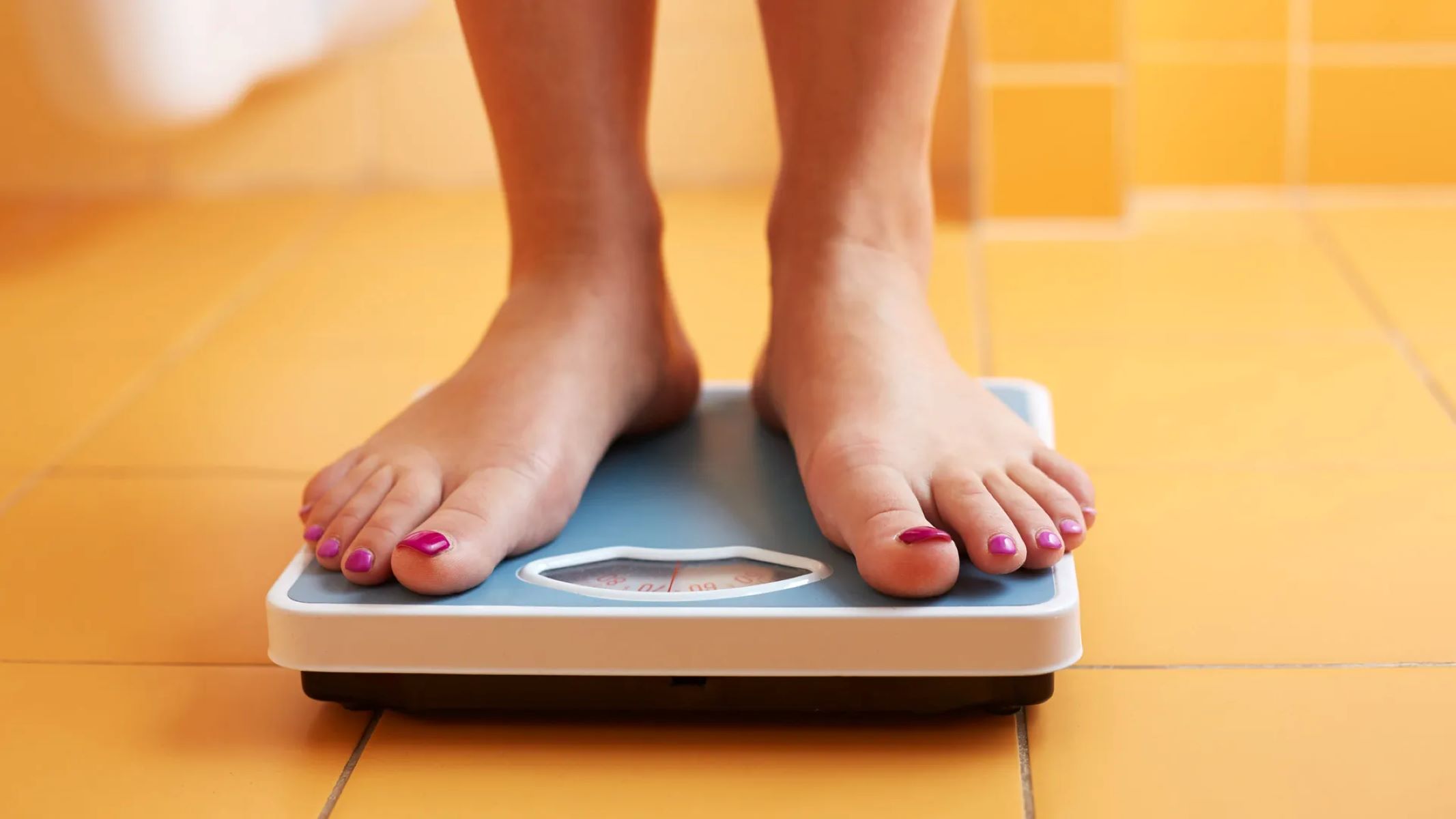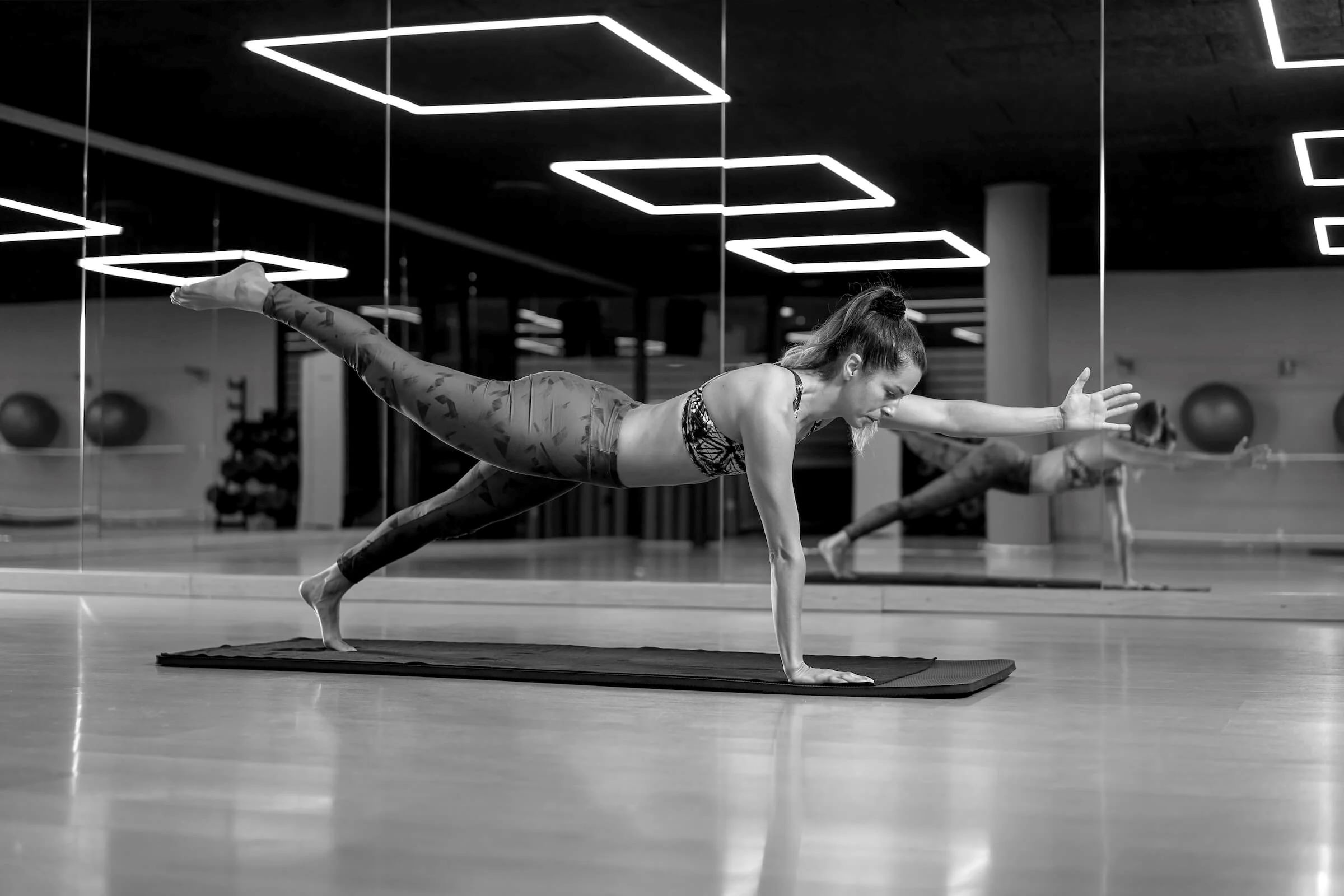

Featured
How To Workout Based On Menstrual Cycle
Modified: August 21, 2023
Discover the best workout routine tailored to your menstrual cycle. Get featured tips and advice for optimizing your fitness based on your cycle.
Introduction
The menstrual cycle is a natural process that women experience on a monthly basis. It involves various hormonal changes that can have a significant impact on their physical and emotional well-being. While many women may view their periods as a hindrance to their workout routine, understanding the menstrual cycle and tailoring your exercise regimen accordingly can actually yield better results.
By adjusting your workouts to align with the different phases of your menstrual cycle, you can optimize your training, enhance your performance, and even manage any bothersome symptoms that may arise. Whether you’re aiming to build strength, improve endurance, or simply stay active and healthy, working out in sync with your menstrual cycle can make a world of difference.
In this article, we will dive into the four phases of the menstrual cycle and explore how each phase can impact your workouts. We will provide recommendations for exercises that are best suited for each phase and offer tips on managing common symptoms. By the end of this article, you will have a clear understanding of how to structure your workouts according to your menstrual cycle, allowing you to achieve your fitness goals more efficiently and effectively.
Understanding the Menstrual Cycle
The menstrual cycle is the monthly cycle that occurs in women of reproductive age, typically ranging from 24 to 38 days. It involves a series of hormonal changes that prepare the body for potential pregnancy. Understanding the different phases of the menstrual cycle is crucial in order to optimize your workouts and take advantage of the natural fluctuations in your body.
Phase 1: Menstruation (Day 1-7)
Menstruation, also known as the period, is the first phase of the menstrual cycle. It is characterized by the shedding of the uterine lining, resulting in bleeding. During this phase, many women experience discomfort such as cramps and fatigue. It is important to listen to your body during this time and give yourself permission to rest and recover. Light to moderate exercises such as walking, yoga, or low-impact cardio can help alleviate symptoms and improve mood.
Phase 2: Follicular Phase (Day 8-14)
The follicular phase follows menstruation and is marked by the development of follicles in the ovaries. This phase is associated with an increase in estrogen levels, leading to higher energy levels and improved cognitive function. It is a great time to focus on strength training and high-intensity workouts. Your body is more efficient at building muscle during this phase, so incorporating resistance training into your routine can be highly beneficial.
Phase 3: Ovulation (Day 14)
Ovulation is the release of an egg from the ovary and typically occurs around day 14 of the menstrual cycle. This phase is characterized by a surge in estrogen and luteinizing hormone (LH), which can increase energy levels and enhance endurance. It’s a great time to engage in activities that require stamina and cardiovascular endurance, such as running, swimming, or cycling.
Phase 4: Luteal Phase (Day 15-28)
The luteal phase is the final phase of the menstrual cycle and occurs after ovulation. During this phase, progesterone levels rise and the body prepares for potential pregnancy. Many women experience symptoms such as bloating, breast tenderness, and mood swings during this time. Incorporating exercises that promote relaxation and reduce stress, such as yoga or Pilates, can be helpful. It’s also important to listen to your body and adjust the intensity of your workouts if needed.
By understanding the different phases of the menstrual cycle and how they affect your body, you can tailor your workouts accordingly and optimize your performance. In the next sections, we will delve into specific exercises and tips for each phase to help you make the most of your menstrual cycle and achieve your fitness goals.
Phase 1: Menstruation (Day 1-7)
The first phase of the menstrual cycle is menstruation, commonly known as your period. This phase typically lasts anywhere between three to seven days. During this time, the lining of the uterus is shed, resulting in bleeding. Many women experience discomfort during menstruation, including abdominal cramps, bloating, and fatigue.
When it comes to exercise during menstruation, the key is listening to your body and honoring your needs. It’s completely normal to feel more tired and less energetic during this time, so don’t push yourself too hard. Instead, focus on gentle exercises that can help alleviate symptoms and improve your mood.
1. Walking: Taking a brisk walk outdoors can be a great way to get some light exercise during your period. Walking not only improves circulation but also releases endorphins, which can help reduce pain and improve your overall well-being.
2. Yoga: Engaging in gentle yoga poses can help stretch and relax your muscles, alleviating cramps and reducing stress. Restorative yoga, in particular, focuses on gentle movements and deep breathing, providing a soothing and calming effect on your body and mind.
3. Low-impact cardio: If you feel up to it, engaging in low-impact cardiovascular exercises like swimming, cycling, or using an elliptical machine can be beneficial. These exercises are easy on the joints and can help increase blood flow, reducing potential bloating and improving mood.
4. Strength training with light weights: Incorporating light strength training exercises using dumbbells or resistance bands can help improve muscle tone and promote overall strength. Focus on exercises that target the major muscle groups, such as squats, lunges, and bicep curls.
Remember to stay hydrated and take breaks as needed. If you’re feeling particularly fatigued or experiencing severe pain, don’t hesitate to give yourself permission to rest. It’s important to respect your body’s signals and adjust your workouts accordingly during menstruation.
Incorporating exercise during your menstrual cycle can actually help alleviate symptoms such as cramps and fatigue. Additionally, engaging in physical activity releases endorphins, which are known to improve mood and reduce pain. So, rather than avoiding exercise during your period, tailor your routine to suit your body’s needs, and you may find that your workouts can actually provide relief and enhance your well-being during this phase.
Phase 2: Follicular Phase (Day 8-14)
The follicular phase is the second phase of the menstrual cycle, typically occurring from day 8 to day 14. During this phase, the body prepares for potential pregnancy by stimulating the growth of follicles in the ovaries. As a result, estrogen levels start to rise, leading to increased energy, improved cognitive function, and an overall sense of vitality.
The rise in estrogen during the follicular phase offers an ideal environment for strength training and high-intensity workouts. This is the time to focus on building strength and increasing muscle mass. Here are some exercises that are well-suited for the follicular phase:
1. Resistance training: Incorporate compound exercises that target multiple muscle groups, such as squats, deadlifts, bench presses, and rows. Aim for moderate to heavy weights and perform 8-12 repetitions per set. This will help build lean muscle mass and improve overall strength.
2. Cardiovascular exercises: Engage in aerobic activities like running, cycling, or dancing to improve cardiovascular fitness. Incorporate intervals of high intensity to challenge yourself and improve endurance. Don’t be afraid to push yourself during this phase, as your body is primed to perform at its best.
3. Circuit training: Combine strength and cardiovascular exercises into a circuit-style workout. This approach alternates between strength exercises and aerobic activities, keeping your heart rate elevated while also challenging your muscles. Focus on incorporating compound exercises, plyometrics, and short rest periods between sets.
4. HIIT (High-Intensity Interval Training): HIIT workouts involve short bursts of intense exercise followed by short recovery periods. This type of training is especially effective during the follicular phase when your energy levels are high. Incorporate exercises like burpees, jumping jacks, and mountain climbers for an intense and efficient workout.
Be mindful to properly warm up before engaging in high-intensity workouts and prioritize good form to reduce the risk of injury. Don’t forget to stay hydrated and refuel your body with adequate nutrition to support muscle growth and recovery.
During the follicular phase, your body has the capacity to build muscle and improve endurance. Take advantage of this hormonal surge by challenging yourself with intense workouts. Pushing your limits during this phase can lead to significant improvements in strength and performance.
Phase 3: Ovulation (Day 14)
Ovulation is a key phase in the menstrual cycle that occurs around day 14. This is the time when a mature egg is released from the ovaries and travels down the fallopian tube, making it the most fertile period of the cycle. Ovulation is marked by a surge in estrogen and luteinizing hormone (LH), resulting in increased energy levels and a heightened sense of well-being.
During ovulation, your body is primed for activities that require stamina and cardiovascular endurance. It’s a great time to engage in exercises that get your heart rate up and challenge your aerobic capacity. Here are some workout recommendations for the ovulation phase:
1. Running: Lace up your running shoes and hit the pavement or the treadmill. Running is a fantastic cardiovascular exercise that can help improve endurance and elevate mood. Consider adding intervals of higher intensity to push your limits and challenge your cardiovascular system.
2. Swimming: Take advantage of the low-impact nature of swimming to engage in a full-body workout. Swimming not only improves cardiovascular fitness but also provides resistance against the water, helping to tone muscles without putting stress on the joints. Try different strokes and intensities to keep things interesting.
3. Cycling: Whether you prefer indoor cycling or hitting the road, cycling is an excellent way to enhance cardiovascular fitness while also targeting your lower body muscles. Consider incorporating intervals of high intensity or uphill sprints to challenge yourself and improve your stamina.
4. Dance workouts: Get your groove on with dance workouts such as Zumba, hip-hop, or salsa. Dancing not only provides a fun and enjoyable workout but also improves coordination, flexibility, and overall cardiovascular fitness. Plus, the upbeat music can boost your mood and motivation.
Remember to listen to your body and adjust the intensity of your workouts as needed. While ovulation is a time of heightened energy, it’s important to avoid overexertion or pushing yourself beyond your limits. Stay hydrated, wear appropriate workout gear, and prioritize proper form to prevent injuries.
Engaging in activities that challenge your aerobic capacity during ovulation can help improve cardiovascular fitness and endurance. Embrace the surge of energy and take advantage of this phase by pushing yourself in your workouts. Not only will you reap the physical benefits, but you’ll also feel a sense of empowerment and accomplishment.
Phase 4: Luteal Phase (Day 15-28)
The luteal phase is the final phase of the menstrual cycle, occurring from day 15 to day 28. During this phase, the body prepares for potential pregnancy by producing progesterone, which helps thicken the uterine lining. The luteal phase is known for fluctuating hormone levels, which can trigger a range of physical and emotional symptoms.
It’s important to note that some women may experience premenstrual syndrome (PMS) symptoms during this phase, such as bloating, breast tenderness, mood swings, and fatigue. As a result, it’s essential to adjust your workouts to accommodate these symptoms and support your well-being.
1. Yoga and Pilates: Engaging in yoga or Pilates during the luteal phase can be beneficial for managing both physical and emotional symptoms. These low-impact exercises focus on stretching, strengthening, and deep breathing, helping to alleviate tension, reduce stress, and promote relaxation.
2. Moderate-intensity Cardio: Opt for moderate-intensity cardiovascular exercises like brisk walking, jogging, or using the elliptical machine. These activities help boost mood, improve circulation, and release endorphins without putting excessive strain on the body.
3. Strength training with lighter weights: Incorporate strength training exercises with lighter weights or resistance bands. Focus on form, mind-muscle connection, and higher repetitions to maintain muscle tone and strength without overexerting yourself.
4. Mind-body practices: Consider adding mind-body practices such as meditation or deep breathing exercises to your fitness routine during the luteal phase. These practices can help reduce stress, manage emotions, and promote overall well-being.
Be sure to listen to your body and make adjustments based on how you’re feeling. If you’re experiencing severe PMS symptoms or extreme fatigue, give yourself permission to take rest days or engage in gentle activities that promote relaxation. It’s crucial to prioritize self-care and support your body’s needs during this phase.
Remember, the luteal phase is a time of hormonal fluctuations and potential discomfort. By choosing exercises that promote relaxation, reduce stress, and support your overall well-being, you can better manage symptoms and support your body during this phase of the menstrual cycle.
Adjusting Your Workouts during Each Phase
Every phase of the menstrual cycle brings unique changes to your body, and adjusting your workouts accordingly can optimize your performance, support your well-being, and help you achieve your fitness goals. Here’s a breakdown of how you can modify your workouts during each phase:
1. Menstruation Phase: During menstruation, focus on gentle exercises like walking, yoga, or low-impact cardio. Listen to your body and give yourself permission to rest and recover if needed.
2. Follicular Phase: As estrogen levels rise during the follicular phase, take advantage of increased energy by incorporating strength training and high-intensity workouts into your routine.
3. Ovulation Phase: During ovulation, engage in activities that require stamina and cardiovascular endurance, such as running, swimming, cycling, or dance workouts.
4. Luteal Phase: Adjust your workouts during the luteal phase to accommodate potential PMS symptoms. Focus on lower-impact exercises like yoga, Pilates, moderate-intensity cardio, and strength training with lighter weights.
Remember, these are general guidelines, and it’s important to listen to your body and make modifications based on how you’re feeling. If you experience extreme fatigue, pain, or any other discomfort, it’s essential to give yourself permission to rest and prioritize self-care.
Additionally, tracking your menstrual cycle can help you anticipate and plan your workouts accordingly. There are various apps and tools available that can assist you in tracking your cycle and understanding the different phases. By gaining a deeper understanding of your body’s patterns, you can optimize your training and make the most out of each phase.
Don’t be too hard on yourself if you can’t always stick to your regular workout routine during your menstrual cycle. It’s natural for your energy levels and physical needs to fluctuate. Embrace the adaptability and flexibility in your workouts, and remember that consistency and self-care are key in maintaining a healthy and balanced fitness routine throughout your cycle.
Recommended Exercises for Each Phase
Understanding the different phases of your menstrual cycle can help you tailor your workouts to maximize results and support your overall well-being. Here are some recommended exercises for each phase:
1. Menstruation Phase: During your period, focus on low-impact exercises such as walking, yoga, or low-intensity cardio. These activities can help alleviate cramps, reduce fatigue, and improve your mood. Aim for gentle movements that promote relaxation and allow your body to recover.
2. Follicular Phase: As estrogen levels rise, take advantage of increased energy and focus on strength training exercises. Incorporate compound movements like squats, deadlifts, lunges, and bench presses. Aim to lift moderate to heavy weights and perform 8-12 repetitions per set. This phase is ideal for building strength and lean muscle mass.
3. Ovulation Phase: During ovulation, engage in activities that challenge your cardiovascular endurance. Running, swimming, cycling, and dance workouts are great options. Consider incorporating intervals of higher intensity to push your limits and improve your stamina. This phase is perfect for enhancing cardiovascular fitness and boosting your overall endurance.
4. Luteal Phase: Adjust your workouts during the luteal phase to accommodate potential PMS symptoms. Focus on exercises that promote relaxation, reduce stress, and support your overall well-being. Yoga, Pilates, moderate-intensity cardio activities like brisk walking or using the elliptical machine, and strength training with lighter weights are all great options.
Remember to listen to your body, make modifications as needed, and prioritize self-care. It’s essential to recognize and honor your individual energy levels, hormonal changes, and physical needs during each phase of your menstrual cycle. Be flexible, adapt your exercises accordingly, and most importantly, be kind to yourself.
Additionally, it’s important to vary your workouts and incorporate a mix of different exercises throughout your entire menstrual cycle. This helps prevent boredom, improves overall fitness levels, and targets various muscle groups.
Always prioritize proper form, warm up properly before each workout, and listen to your body’s signals. If you experience any severe pain or discomfort, consult with a healthcare professional to ensure that your exercise routine is suitable for your specific needs.
By adjusting your exercise routine to align with your menstrual cycle, you can optimize your workouts, enhance your performance, and support your overall well-being throughout the month.
Exercise Tips to Manage Symptoms
Experiencing symptoms during your menstrual cycle is normal, but it doesn’t have to hinder your workout routine. Here are some exercise tips to help you manage common symptoms and make your workouts more comfortable and enjoyable:
1. Cramps:
- Engage in gentle exercises like walking or yoga to help alleviate cramps.
- Apply heat to your lower abdomen before or during your workout, such as using a warm towel or a heating pad, to help relax the muscles.
- Practice gentle stretching, focusing on the lower back, hips, and abdominal areas.
2. Fatigue:
- Listen to your body and give yourself permission to take rest days when needed. Rest and recovery are just as important for your fitness journey.
- Opt for low-intensity exercises such as walking or light yoga to stay active without overexerting yourself.
- Consider shorter, more frequent workouts throughout the day instead of one prolonged session.
3. Bloating:
- Choose activities that minimize impact on the abdomen, such as swimming or cycling.
- Avoid high-intensity exercises that require lots of jumping or bouncing, as they can exacerbate bloating.
- Focus on exercises that promote digestion, such as gentle twists or abdominal massages.
4. Mood Swings and Irritability:
- Engage in mood-enhancing exercises like yoga, Pilates, or meditation to promote relaxation and reduce stress.
- Try outdoor activities like walking or hiking to connect with nature and boost your mood.
- Choose workouts that you enjoy and find uplifting, such as dancing or group fitness classes, to enhance your overall well-being.
5. Breast Tenderness:
- Wear a supportive sports bra that provides adequate compression and reduces breast movement during exercise.
- Opt for low-impact exercises like swimming or using an elliptical machine to minimize breast discomfort.
- Avoid exercises that put excessive pressure on the chest area, such as push-ups or bench presses.
Remember, these tips are general guidelines, and it’s important to listen to your body and adjust your workouts based on what feels comfortable and supportive for you. Above all, be kind to yourself and prioritize self-care. If you have ongoing or severe symptoms that significantly impact your ability to exercise, it’s always a good idea to consult with a healthcare professional.
By incorporating these exercise tips into your routine, you can better manage common symptoms and maintain a consistent workout schedule throughout your menstrual cycle.
Conclusion
Your menstrual cycle shouldn’t be seen as an obstacle to your fitness journey but rather as a powerful tool in optimizing your workouts and overall well-being. By understanding the different phases of your menstrual cycle and adjusting your exercise routine accordingly, you can enhance your performance, manage symptoms, and achieve your fitness goals more effectively.
During menstruation, focus on gentle activities that promote relaxation and support your body’s natural need for rest. As you move into the follicular phase, take advantage of increased energy levels to engage in strength training and high-intensity workouts. During ovulation, challenge your cardiovascular endurance with activities like running, swimming, or cycling. During the luteal phase, prioritize exercises that enhance relaxation and reduce stress, such as yoga or moderate-intensity cardio.
Throughout the entire menstrual cycle, remember to listen to your body, make modifications as needed, and prioritize self-care. It’s essential to honor your body’s signals, adjust your workouts accordingly, and be kind to yourself.
Additionally, tracking your menstrual cycle can provide valuable insights into your body’s patterns and help you plan and adapt your workouts more effectively. There are various apps and tools available that can assist you in tracking your cycle and understanding its impact on your energy levels and performance.
Remember that consistency, adaptability, and self-compassion are key. Embrace the natural fluctuations of your menstrual cycle and allow yourself to adapt your workouts accordingly. Some days you may feel like pushing harder, while other days you may need to take it easy. Trust your intuition and give yourself permission to listen to what your body needs.
By incorporating exercise tailored to your menstrual cycle, you can optimize your workouts, manage symptoms, and support your overall well-being and fitness journey. Embrace the power of your menstrual cycle and use it to your advantage, knowing that you have the ability to achieve your goals while respecting and nourishing your body every step of the way.




